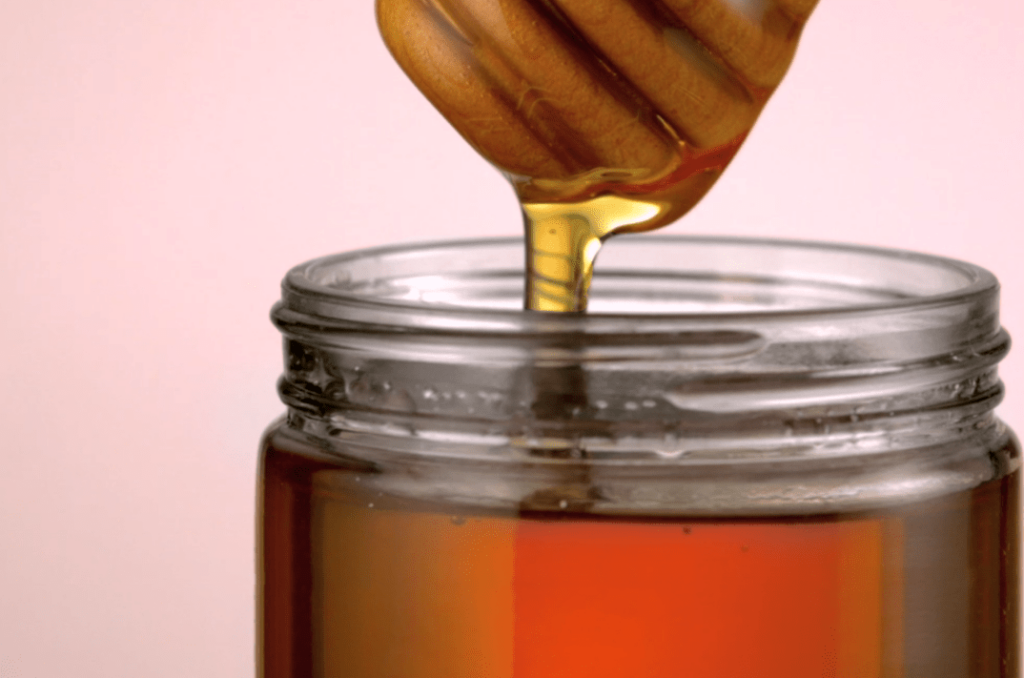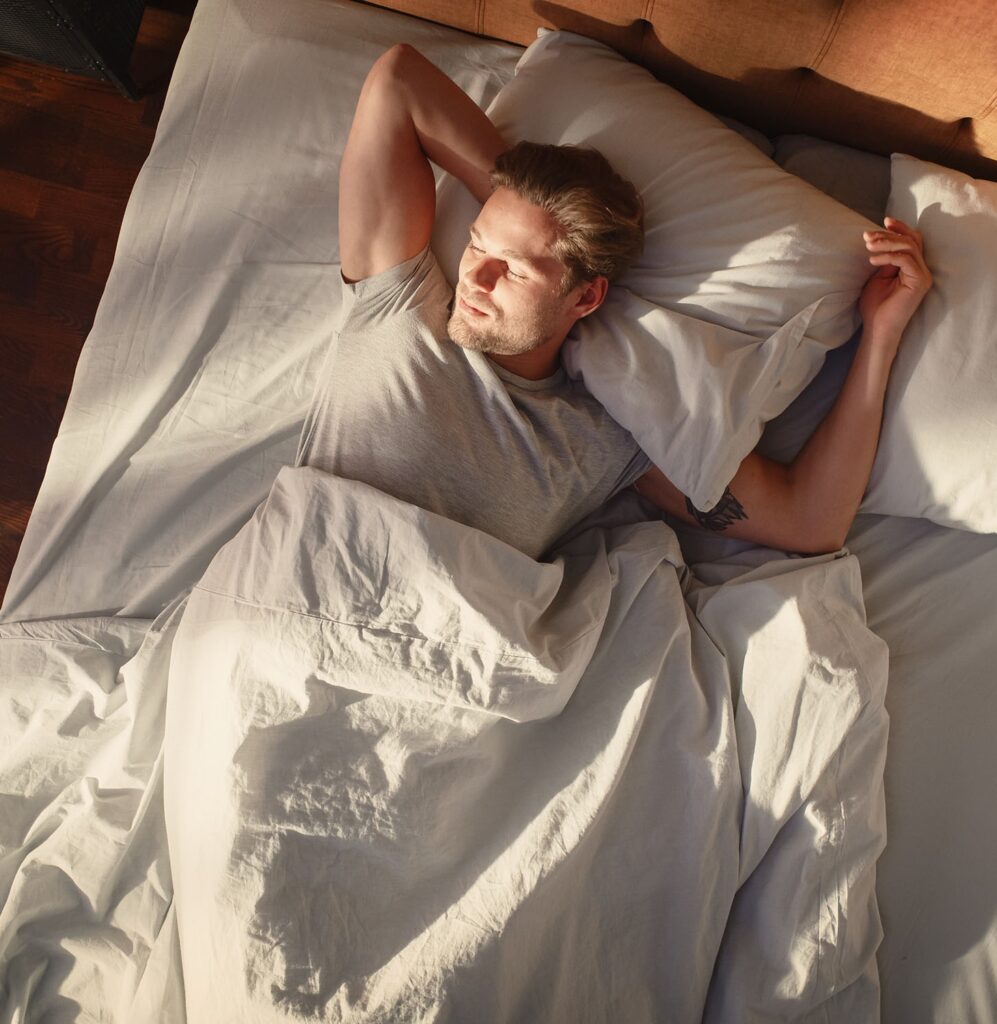Using the Power of Sunlight for a Healthier You Aetas Protocols
In our fast-paced, technology-driven world, it’s easy to become disconnected from nature, including the source of life itself: the sun. While it’s important to protect our skin from harmful UV rays, basking in a healthy amount of sunlight can offer a variety of benefits for both our physical and mental well-being. In the Danish population, up to 23% of adults are low in Vitamin D1Grønborg, I. M., Tetens, I., Ege, M., Christensen, T., Andersen, E. W., & Andersen, R. F. (2019). Modelling of adequate and safe vitamin D intake in Danish women using different fortification and supplementation scenarios to inform fortification policies. European Journal of Nutrition, 58(1), 227–232. and so it’s important to remember that getting a good balance of healthy sunlight is necessary for living a longer, healthier life.

The Science behind Sun Exposure
Exposure to the sun – and therefore ultraviolet (UV) light – is essential for maintaining many aspects of human health. UVB rays convert to a precursor molecule into vitamin D3 which is then transported to the liver and kidneys, where it undergoes further processing to become the active form of vitamin D, regulating calcium and phosphate metabolism and impacting various tissues throughout the body 2Holick, M. F. (2007). Vitamin D deficiency. New England Journal of Medicine, 357 (3), 266-281.
Similarly, photoreceptors in the eyes respond to UV exposure and influence the regulation of our internal body clock. Several studies in the past decade show that insufficient sun exposure can be the reason for an increased incidence of breast cancer, colon cancer, high blood pressure, multiple sclerosis, cardiovascular diseases, Alzheimer’s, autism, asthma, and type 1 diabetes3,University of Southampton. (2014, January 17). Here comes the sun to lower your blood pressure. Science Daily.4Alfredsson, L., Armstrong, B. K., Butterfield, D. A., Chowdhury, R., de Gruijl, F. R., Feelisch, M.,Garland, C. F., Hart, P. H., Hoel, D. G., Jacobsen, R., Lindqvist, P. G., Llewellyn, D. J., Tiemeier, H.,Weller, R. B., & Young, A. R. (2020). Insufficient Sun Exposure Has Become a Real Public Health Problem. International journal of environmental research and public health, 17(14), 5014..
Studies have also shown that sunlight causes our bodies to produce serotonin and nitric oxide – a chemical that helps protect our cardiovascular system as well as being proven to boost our libido and overall mood5Sansone, R. A., & Sansone, L. A. (2013). Sunshine, serotonin, and skin: a partial explanation for seasonal patterns in psychopathology?. Innovations in clinical neuroscience, 10(7-8), 20–24..
One of the reasons why light has such a large effect on so many different aspects of our biology is that it can be converted into electrical signals in our brain and body, as well as cascades of biological pathways. In other words, light can actually change how the genes of cells are expressed. It depends on the absorption or reflection of light in a cell, as well as the wavelength of light.
What are wavelengths and how does this matter?
Well, all light has energy, regardless of wavelength. Although we can only see some wavelengths, light affects us at many different levels in the body. It can be direct (on the skin) or indirect (through signals to other organs in the body), but in all cases it starts with how the different wavelengths of light are absorbed. When we are exposed to direct light, we are also hit by short and long wavelengths.
Different wavelengths of light have varying effects on the body6Andrew Huberman. (2022, April 18). Using Light (Sunlight, Blue Light & Red Light) to Optimize Health | Huberman Lab Podcast #68. Long wavelengths, like infrared light, can impact the skin and body by changing how cells and organs function. Red light for example has long wavelengths and can increase blood circulation, alleviate pain7Tsagkaris, C., Papazoglou, A. S., Eleftheriades, A., Tsakopoulos, S., Alexiou, A., Găman, M. A., & Moysidis, D. V. (2022). Infrared Radiation in the Management of Musculoskeletal Conditions and Chronic Pain: A Systematic Review. European journal of investigation in health, psychology and education, 12(3), 334–343., help with arthritis, and promote sleep by releasing melatonin. In comparison short wavelengths, like UV and blue light, can increase mental performance, affect how alert you are, your concentration, the regulation of hormones and boost your mood by increasing serotonin8Alkozei, A., Dailey, N. S., Bajaj, S., Vanuk, J. R., Raikes, A. C., & Killgore, W. D. (2021). Exposure to Blue Wavelength Light Is Associated With Increases in Bidirectional Amygdala-DLPFC Connectivity at Rest. Frontiers in Neurology, 12.. It can also disrupt sleep cycles, cause eye strain and headaches, and increase the risk of cataracts9Wong, N. A., & Bahmani, H. (2022). A review of the current state of research on artificial blue light safety as it applies to digital devices. Heliyon, 8(8), e10282..
To minimise the negative effects of blue light from screens, you should reduce your exposure to blue light in the hours around bedtime, and use blue light glasses that filter out blue light if you use screens later in the evening.
Light can also affect our circadian rhythm through melatonin10Blume, C., Garbazza, C., & Spitschan, M. (2019). Effects of light on human circadian rhythms, sleep and mood. Somnologie : Schlafforschung und Schlafmedizin = Somnology : sleep research and sleep medicine, 23(3), 147–156. which is a hormone that your brain produces in response to warm light and darkness. It helps with the timing of your circadian rhythm and your sleep. The hormone works by affecting our sense of wakefulness or fatigue.
When the photoreceptors in your eyes are exposed to blue light, they signal to your brain to stop releasing melatonin, which makes you wake up. On the other hand, red light signals the brain to begin releasing melatonin. The less blue light there is around you, the greater the amount of melatonin released, and the more tired you become.
On short days (in winter months), the duration of melatonin release will be much longer, and on long days (in summer months), it will be shorter. This is why it is important to have a consistent sleep schedule, as it helps regulate the production of melatonin and your sleep-wake cycle.
Benefits behind Sun Exposure
1. Boosts Vitamin D Production
Sunlight is the most natural and abundant source of vitamin D. Vitamin D is essential for our health and helps our body absorb calcium, strengthen our bones, and support our immune system. It even reduces the risk of certain diseases like osteoporosis, heart disease, and some types of cancer.
A lack of vitamin D can cause soft bones, bone fractures, infections, heart disease, diabetes, cancer, and other degenerative diseases. We get vitamin D from sunlight, so not getting enough sun or outdoor activity can lead to a deficiency. This is common in countries with little sun exposure, like Denmark. Even people who spend a lot of time outside might not get enough vitamin D. It can be helpful to measure your vitamin D levels via a blood test and take supplements. Vitamin D supplements can improve immune defence, bone health, and well-being.
The official recommended daily dose of vitamin D is 400-800 IU/day, but that might not be enough for many adults, especially in northern countries11Pfiffner, M. M. S. & Examine.com. (2022, September 28). Vitamin D.. Aetas recommends 2,500 IU per day for people that live in the Northern Hemisphere.
2. Enhances Mood and Fights Depression
Ever noticed how spending time outdoors on a sunny day instantly uplifts your spirits? Sunlight has a profound effect on our mood and mental well-being. Exposure to sunlight stimulates the production of serotonin, a neurotransmitter known as the “happy hormone,” which helps regulate mood, sleep patterns, and appetite12Alfredsson, L., Armstrong, B. K., Butterfield, D. A., Chowdhury, R., de Gruijl, F. R., Feelisch, M., Garland, C. F., Hart, P. H., Hoel, D. G., Jacobsen, R., Lindqvist, P. G., Llewellyn, D. J., Tiemeier, H., Weller, R. B., & Young, A. R. (2020). Insufficient Sun Exposure Has Become a Real Public Health Problem. International journal of environmental research and public health, 17(14), 5014.. Adequate sunlight has been linked to alleviating symptoms of depression, reducing stress, and boosting overall mental health.
3. Improves Sleep Patterns
The natural exposure to sunlight during the day helps regulate our internal body clock, known as the circadian rhythm. This synchronisation is crucial for maintaining healthy sleep patterns. Exposure to sunlight in the morning or early afternoon helps signal to our bodies that its daytime, thus promoting alertness and wakefulness. A well-regulated circadian rhythm enhances the quality and duration of our sleep, leading to improved cognitive function, increased productivity, and a better overall sense of well-being. To read more on how to improve your sleep check out our article here.
4. Strengthens the Immune System
Sunlight exposure has been found to have a positive impact on our immune system. Research suggests that moderate sun exposure can enhance the function of white blood cells, which play a crucial role in defending our bodies against infections and diseases. Additionally, vitamin D produced by sunlight stimulates the production of antimicrobial peptides, which possess antimicrobial properties and aid in fighting off pathogens13González Maglio, D. H., Paz, M. L., & Leoni, J. (2016). Sunlight Effects on Immune System: Is There Something Else in addition to UV-Induced Immunosuppression?. BioMed research international, 2016, 1934518..
5. Supports Skin Health
While excessive sun exposure can damage the skin, moderate and responsible exposure to sunlight can actually benefit its health. Sunlight helps stimulate the production of melanin, the pigment responsible for giving our skin its colour and protecting it from harmful UV rays. Additionally, sunlight has been associated with improvements in skin conditions such as psoriasis, eczema, and acne5Sansone, R. A., & Sansone, L. A. (2013). Sunshine, serotonin, and skin: a partial explanation for seasonal patterns in psychopathology?. Innovations in clinical neuroscience, 10(7-8), 20–24.. However, it’s important to strike a balance and always take appropriate sun protection measures to avoid sunburn and long-term damage.
A Caution on Too Much Sun
Sunlight that contains UV light can cause skin damage and discolouration. The UV spectrum is divided into two types: UVA and UVB. UVB mainly causes sunburns, while UVA is more dangerous and can lead to skin cancer and early ageing due to genetic mutations in the skin. Many sun creams can block UVB, but not all provide sufficient protection against UVA. This means that if you choose the wrong sunscreen, you may increase your exposure to UVA and harm your skin more than if you were sunburned therefore it’s always important to check what you are using and reapply often14Hoel, D. G., Berwick, M., De Gruijl, F. R., & Holick, M. F. (2016). The risks and benefits of sun exposure 2016. Dermato-endocrinology, 8(1), e1248325.
It’s also important to remember that avoiding sun altogether is not healthy either, as mentioned at the beginning, 23% of the Danish population are low in Vitamin D which also has its drawbacks. To learn more about what is healthy for you and your body, schedule a free consultation with us here and we can discuss what could work for you.
How to use Sun Exposure to live a longer and healthier life
There is a delicate balance between getting too much sun and too little. Exposure to too much sun can cause sunburn, and in rare cases, lead to skin cancer. However, insufficient sun exposure can also have harmful effects and is correlated with a range of mental conditions. It can also increase the risk of cancer, heart disease, Alzheimer’s, diabetes, and multiple sclerosis.
Below is a summary of essential information about this topic and evidence-based advice on how to approach sun exposure and light.
Get sunlight first thing every morning
Get 5-10 minutes of sunlight every morning on clear days and at least 10-20 minutes of sunlight on cloudy days. Exposure to sunlight as soon as possible after waking up is critical for both mental and physical health. Getting sunlight in your eyes in the morning triggers the timed release of cortisol, which promotes wakefulness and the ability to focus throughout the day. It also starts a timer for when melatonin will be released again. When cells’ circadian rhythms are adjusted to each other by early morning sunlight exposure, a biological clock is set to make you feel sleepy somewhere between 14 and 16 hours later.
Do not fear sunlight
Sunlight is necessary for all organisms and helps create energy and well-being, as well as having many beneficial health effects related to longevity. Make sure to get sunlight daily.
Use sunscreen correctly
When using sunscreen, it is also important to apply it correctly. We recommend using an SPF of at least 30. You should apply sunscreen at least 15 minutes before sun exposure and repeat every 2 hours.
Do not wear sunglasses all the time
Do not wear sunglasses all the time as sunglasses block the sun and you will not get the beneficial effects of sunlight.
Use sunscreen that protects against UVA and UVB
Check the label on your sunscreen to look for ingredients that offer protection against both UVA and UVB, and research if your sunscreen contains harmful chemicals.
Adjust your circadian rhythm to the sun
Adjust your circadian rhythm as much as possible to the sun, waking up when the sun rises and going to bed when the sun sets.
Stimulate red light in the evening and avoid blue light
Get enough vitamin D
Be aware of getting enough vitamin D if you do not get much sunlight – especially in the winter. Have your vitamin D levels checked and find out if you need vitamin D supplements.

KEY TAKEAWAY
Sunlight is crucial for our well-being, providing benefits such as vitamin D production, improved mood, better sleep, immune system support, and skin health. However, excessive exposure can be harmful. Finding the right balance, using sunscreen correctly, adjusting circadian rhythms, and ensuring adequate vitamin D levels are key to harnessing the positive effects of sunlight and living a healthier life.
Make your move
Optimise your health so that you live a longer and healthier life
Aetas is a clinic for precision medicine and molecular laboratory. We specialise in Longevity, evidence-based health optimization and preventive treatments.
Enquire Now







